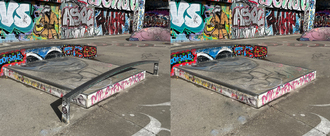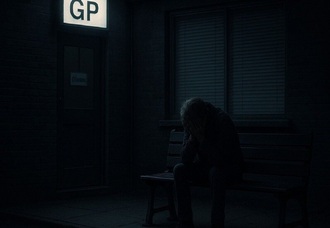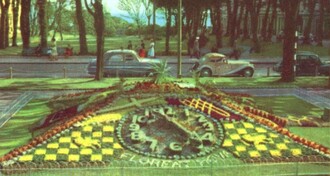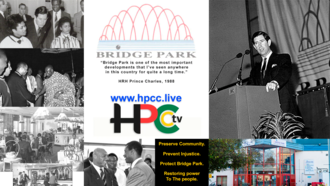-
Revert back to the Padel Hub original membershipsThe Padel Hub has continuously raised membership prices throughout the year, resulting in many loyal members paying well over a thousand pounds. Despite this increased financial commitment, the club has removed the previously offered unlimited-play memberships, a change that feels both unfair and unnecessary. This decision has left long-standing members feeling unvalued and disregarded. Many of us joined with the expectation of consistent pricing and access, and these sudden changes break that trust. The Padel Hub has always had an incredible sense of community, built on friendships, shared passion, and a genuinely positive vibe among members. Many of us have remained loyal despite repeated price increases because we love the sport and valued the welcoming environment the club fostered. This community is the foundation of what makes padel thrive, and without it, the club loses what truly sets it apart. By removing fair and accessible membership options, the Padel Hub risks pushing away the very people who have supported it from the start. Preserving this community is essential—not just for current members, but for the long-term success and spirit of padel itself. Under the original membership structure, each tier allowed access to a share of the court time at no additional cost: • Bronze Membership – £119/month: Play twice per day during off-peak hours (9am–5pm, weekdays). • Gold Membership – £179/month: Play twice per day, including one off-peak and one peak session. • Platinum Membership – £229/month: Play twice per day, including one off-peak and one peak session. A 90-minute court booking normally costs £120 (£30 per person), meaning the memberships offered substantial value and encouraged regular participation. Under the new membership model, a Gold Membership costs £50/month but only provides a 30% discount on court bookings. For a player who wishes to play 24 times in a month, the cost would now be £504 in court fees plus £50 membership. This represents a 209% increase in cost, while also reducing the possible number of monthly play sessions. Under the original system, a member could pay £179 and play up to 60 times a month (2 x a day). Under the new structure, if a member wishes to keep their monthly spending at the same £179, they would only be able to play 6 times—since court fees alone would total £124, plus the £50 membership fee. This is a reduction from 60 sessions down to 6, a 90% decrease in playing opportunities. This dramatic price increase and reduction in playing opportunities highlights why reinstating the original membership structure is important for fairness, accessibility, and the continued growth of the community.636 of 800 SignaturesCreated by Samuel Hugh
-
Make Blackheath Station Car Park an Asset of Community ValueBlackheath Station Car Park is vitally important to the Blackheath Village community and must be protected. It provides: - essential parking for access to Blackheath shops, cafés, restaurants, and pubs, supporting the local economy and plays a valuable role in maintaining a vibrant community. - parking for tradespeople working in Blackheath. - a safe drop-off and collection point for children attending John Ball Primary School as well as for parking associated with the school. - parking for access to Blackheath Station, enabling travel into central London and Kent for work, shopping, cultural, and leisure activities. This is particularly important for residents with impaired mobility. - space to host a busy Sunday farmers’ market, that is highly valued by residents. Local traders benefit greatly from the extra custom they receive on Sundays.76 of 100 SignaturesCreated by David Curtis
-
Greenwich S.O.S. Save Our ShopsSince the Low Traffic Neighbourhood was put in place in Blackheath Westcombe back in November 2024 businesses have started to struggle. Now, a year later, and the Council has decided to make the scheme permanent despite its negligible improvements to air quality, despite its displacement of traffic onto boundary roads and despite the high levels of inconvenience that it has caused both residents and businesses. Many businesses in both Westcombe Park and Blackheath Standard are recording a drop in trade of up to 30% and some will not be able to stay open for much longer. We believe that we make a really valuable contribution to our community, making it unique and interesting in a way that only such a large proportion of independent businesses can do. We urge the Council to listen to us, support us and accept our demands in order to keep this area vibrant. We need a cast iron guarantee that 2 hours free parking will remain on the roads where all of our shops are situated. We need the Car Park on Old Dover Road to remain. We need the LTN scrapped in its entirety. Or at the very least, the hours of operation to reflect the hours of business i.e. from 7.00 until 9.00 in the mornings and from 5.00 until 7.00 in the evenings. Plus the cameras removed from Langton Way and St Johns Park.And a permit system linked to individual shops that allow deliveries to be made without penalty.607 of 800 SignaturesCreated by Timothy Waters
-
Get rid of the rainbow rail at Mile End skateparkThe rainbow rail at Mile End skatepark is the least used part of the park, no-one likes it, no one skates it. It's especially frustrating as underneath the rail is a perfect kerb, but the stupid rail is in the way. The park would be SO much better if we could chop out the rail and skate that instead. The kerb is what we all want to skate. It's perfect for beginners and more experienced skaters to practice on before taking tricks to one of the bigger ledges. Simply chopping out the rail would open up the obstacle and make the park much better. Seriously, NO ONE wants to skate the rainbow rail. Please chop it out and get rid of it.44 of 100 SignaturesCreated by Robin Priestley

-
Stop forcing local charities and community groups to pay unfair energy billsI am involved with a local Scout Group. Having barely survived the pandemic, we are now being grossly overcharged for our electricity, constantly threatened with court action for late payment, and it is a constant struggle to keep our heads above water financially. Groups like ours often run on shoestring budgets, donations from the public, and the goodwill of volunteers. They shouldn't have to spend their time fundraising just to pay an energy bill they can't afford, or face threats of court action from their supplier. It's a simple, common-sense change. Let's demand that Ofgem and energy suppliers give charities and community groups a fair deal, so they can focus on what they do best: helping others and serving our communities.2 of 100 SignaturesCreated by Phil Hovey
-
Stop SSEN’s Unworkable Daytime Closure of the A832 at DundonnellWHY THIS MATTERS The A832 is a vital lifeline road. The proposed daytime closure and very limited ‘amnesty’ windows will isolate households and disrupt essential services (GP/community nursing visits, postal and courier deliveries, trades, home care), harm local businesses and tourism, and place avoidable pressure on emergency access. NOTES FOR SIGNERS If you live, work, or regularly travel the A832, please add your village/town and postcode in your comment to show local impact. Please sign and share: the current proposed daytime closure of the A832 at Dundonnell (27 Oct–mid Dec 2025 & Jan–Mar 2026) is unworkable, inadequate and unacceptable. We’re asking for ONE LANE WITH LIGHTS, or longer/more frequent access windows, or night works. Local life and livelihoods depend on a fair plan. DISCLAIMER This petition seeks a safe, workable access plan during SSEN works that protects community life and local businesses.734 of 800 SignaturesCreated by Lisa Stewart
-
No One in Crisis Should Be Ignored by GPs in Northern IrelandRight now in Northern Ireland, people in mental health crisis are being told by GP practices to “call back tomorrow” — even when they say they are suicidal. This is dangerous, degrading, and risks lives. Mental health emergencies are just as serious as a heart attack or broken bone. Yet too often, people who bravely ask for help are turned away, leaving them feeling invisible and hopeless. Some may survive the night — but others may not. Northern Ireland has one of the highest suicide rates in the UK. We cannot afford a system that ignores people at their most vulnerable. By joining this campaign, you are helping demand a compassionate, safe, and urgent response to mental health crises in GP practices. Together, we can push for reforms that will save lives and ensure dignity for everyone.4 of 100 SignaturesCreated by Miroslaw Osmolski
-
Save Hove Floral Clock!The floral clock is a famous city landmark and has appeared on many postcards over the years. It would be a crime to get rid of Hove's once-beautiful floral clock and the community have been given no say in this council decision.3,138 of 4,000 SignaturesCreated by Laura King
-
“Install Bigger Trash Cans at Edgbaston Reservoir and Summerfield Park”.Edgbaston Reservoir and Summerfield Park are two of Birmingham’s most loved community spaces. Families, children, joggers, cyclists, and nature lovers gather here daily to enjoy fresh air and green surroundings. But our parks face a serious problem: overflowing bins and litter left behind. When bins are too small and spill over, trash ends up on the ground, blowing into the water, damaging the environment, and harming wildlife. Foxes, birds, and other animals eat discarded food and packaging—putting their health and survival at risk. Visitors are also left with dirty, unpleasant spaces instead of clean, welcoming parks. Overflowing bins don’t just look bad—they’re dangerous. Plastics and rubbish can blow into the reservoir, polluting the water and harming fish and plant life. This issue is not about people caring less—it’s about not having enough proper facilities to dispose of waste responsibly. The current bins are simply too small to cope with the amount of rubbish left during busy days, especially in the summer months. Also,squirrels and rodents are scattering rubbish, creating hygiene issues. We, the undersigned, are calling on Birmingham City Council and local authorities to: 1. Install larger-capacity trash cans that are rodent proof at Edgbaston Reservoir and Summerfield Park. 2. Increase the frequency of waste collection, especially during weekends and summer. 3. Provide educational signage reminding visitors that this is home to wildlife, and we are only guests. By taking these steps, we can: • Protect wildlife from harm. • Preserve the natural beauty of our parks. • Encourage responsible waste disposal. • Create safer, cleaner spaces for everyone in the community. Why is this important? Edgbaston Reservoir and Summerfield Park are more than just green spaces—they are community lifelines. Families gather here for picnics, children play, joggers and cyclists enjoy the paths, and nature thrives around us. But every time bins overflow, these beautiful places are spoiled with rubbish on the ground, food waste scattered everywhere, and wildlife put at risk. It’s heartbreaking to see our parks—spaces that should bring peace and joy—turned into dumping grounds simply because the bins are too small. Bigger bins and more frequent collections are simple solutions that can make a big difference. Why should others join? Because this isn’t just about litter—it’s about respect. Respect for nature, respect for our community, and respect for the spaces we all share. Clean parks mean safer play areas for children, healthier homes for wildlife, and welcoming green spaces for everyone to enjoy. What I’d say to a friend: “I go to the reservoir and see rubbish piled up higher than the bins, food rotting on the ground, and animals scavenging in dangerous waste. It makes me sad because this is supposed to be a place where we feel proud to bring our kids, our families, and our friends. Imagine if every time you went to relax in nature, it felt like stepping into a landfill. That’s not fair to us, and it’s not fair to the wildlife that calls these parks home. That’s why I care. And that’s why I’m asking you to care too.” Our parks are treasures—but they need our care. We urge Birmingham City Council to act now. Bigger bins that are rodent proof mean cleaner parks, healthier wildlife, and a stronger community. OUR PARKS, OUR RESPONSIBILITY.63 of 100 SignaturesCreated by Kamal Gibbons

-
Bring Back the Warhammer Translation License for Ukraine — Support Molfar ComicsLet Warhammer continue to thrive in Ukraine. Bring back Molfar Comics.13 of 100 SignaturesCreated by Дмитрий Новохатский
-
Stop The Closure And Return Bridge Park To Community Ownership And ControlBecause Bridge Park was built by the community, for the community, its closure would be a betrayal of decades of sacrifice, vision, and hard work by Black pioneers who transformed a derelict site into a centre of excellence. If we do not act now, we allow injustice to prevail and our legacy to be erased. This is not just about a building. It is about truth, justice, ownership, and the right of a people to govern what they built. We must stand together or risk losing everything. 1. Bridge Park Was Built by Us, Not Given to Us This is not council property — it is people’s property. Built by Black youth from the ashes of neglect, Bridge Park stands as a monument to vision, sacrifice, and self-determination. To allow its closure is to dishonour the blood, sweat, and brilliance of its founders. 2. Losing Bridge Park Means Losing Our History Bridge Park is living history. It tells the story of how a forgotten generation turned a dumping ground into a legacy of excellence. Erasing it would be like burning the pages of our community's most significant chapter. 3. This Is a Matter of Justice, Not Just Property To close Bridge Park is to reward injustice. Brent Council’s actions violate trust, trample agreements, and ignore the moral and legal rights of those who built it. Signing the petition is a way to stand up for what is right. 4. The Fight Is Bigger Than Brent – It's a National Struggle Bridge Park is the largest Black-owned community asset in the United Kingdom. If we lose this, it sets a dangerous precedent for every other Black-led project in the UK. What happens here affects us all. 5. We Are Protecting the Next Generation Our children deserve to inherit opportunity, not injustice. Bridge Park was created to provide young people with a space to dream, grow, and lead. We must guard this legacy so they are not left with loss. 6. The Council Has Shown Dishonesty and Disrespect Brent Council has failed to act transparently, legally, or ethically. Signing the petition sends a clear message that the people will no longer be silent in the face of deception, bullying, or broken promises. 7. This Is About Ownership and Power Who owns our future? The people or the politicians? Signing this petition is not just about saving a centre, it’s about reclaiming control over what we built and fought for. 8. The Founders Must Be Honoured, Not Erased The founders of Bridge Park are still here. They are elders, visionaries, and survivors. To close the site is to spit on their contribution and pretend their efforts meant nothing. We must defend them while they can still witness our support. 9. Community Unity Is Our Greatest Weapon This fight unites all backgrounds: African, Caribbean, Asian, White, young, and old. Signing the petition shows that we are one voice, one heart, and one unstoppable movement. Together, we are stronger than any council. 10. Bridge Park Is More Than a Building, It’s Our Crown Jewel This is our legacy. Our symbol. Our crown. Letting it go without a fight would be a betrayal of our ancestors and an injustice to our descendants. We must rise now with courage, clarity, and collective power.554 of 600 SignaturesCreated by Pastor Errol A Williams

-
Save Craft Coop Camberley – Reverse the 140% Rates Hike!Craft Coop CIC brings craft-making and community together by running town-centre shops that showcase and support local artisans and makers, and by hosting art workshops and outreach activities in care homes and community groups. We also organise seasonal events and school partnerships, supporting local charities with in-shop fundraising, whilst engaging in broader community initiatives.543 of 600 SignaturesCreated by Heidi Berry
Hello! We use cookies to improve your experience by providing insights into how the site is being used. Find out more.










